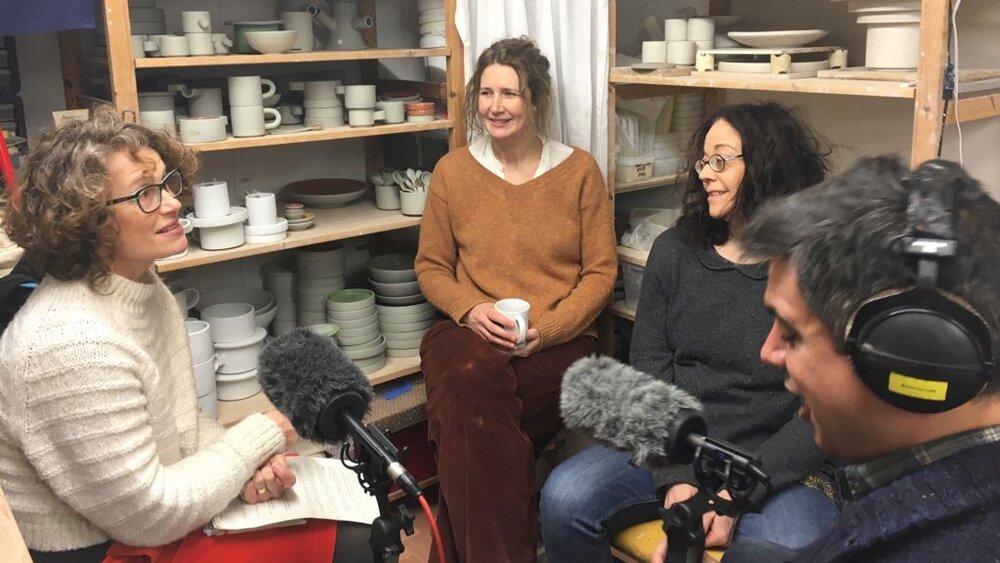A Language of Clay @ New Brewery Arts
1st August – 3rd October 2020
A Language of Clay presents ceramic work from six artists; Justine Allison, Anne Gibbs, Kate Haywood, Lisa Krigel, Ingrid Murphy and Zoe Preece.
Highly regarded in their respective fields, each artist explores the material and aesthetic qualities of clay from different perspectives. Their practices are richly diverse, though are united by a tenacious and skills-based approach. Whether motivated by function, form, social interaction or personal experience, each artist undertakes her practice with a keen sense of Materiality.
They each celebrate what are, arguably, everyday or familiar objects or activities. Zoe’s porcelain works tenderly capture kitchen still lives, marking moments in time. Her pieces are informed by and evoke a sense of intimacy. Time shared over a cup of tea or supper at home is very personal and her work recollects those moments. It posits a reminder for us to acknowledge these transient punctuations in our everyday; maybe even to appreciate the repeat process of washing up.
Lisa unites her passion for food and ceramics in creating her functional sculptures. Deconstructing one of her ceramic towers in order to use it for lunch brings the work to life and celebrates the daily sharing of food and company. Inspired by Brutalist architecture, the profiles of water towers, multi-storeys and high-rise living are readily observed in her tableware stacks.
Justine’s delicate porcelain pieces belie the phenomenal, technical skill demanded in their making. The play of light within, onto and through her vessels is a dynamic component in how Justine designs her work. She brings a quiet reverence to functional objects, seeing beauty in their form. Kate’s porcelain works have both fragility and weight of presence. They are not made as copies of collected objects but are made through a learned knowledge of specific objects. Their making is informed by Kate’s sensitivity to objects, to them being identifiers of place or purpose. A single piece may evoke a ritual that is centuries old or it may reference a toy held dear years ago.
Anne responds to found objects in her practice, encompassing them into her drawings and ceramic sculptures. She uses texture and form evocatively; creating bone china pieces that might stir memories of a particular place or experiences of a particular activity. Making connections are absolutely integral to Ingrid’s practice as well. Be it connections across time, through the provenance of works or across places, through the interactivity of her works.
Ingrid generously collaborates to explore the possibilities of technology through her ceramic making, introducing components that add to the story or engagement of her works.
From the surprising to the familiar, A Language of Clay richly illustrates the wealth of deeply rooted, contemporary ceramics practice. There are points of tension and points of conversation here, between the ceramic works themselves and between the hands that made them and the hands that might hold them.


